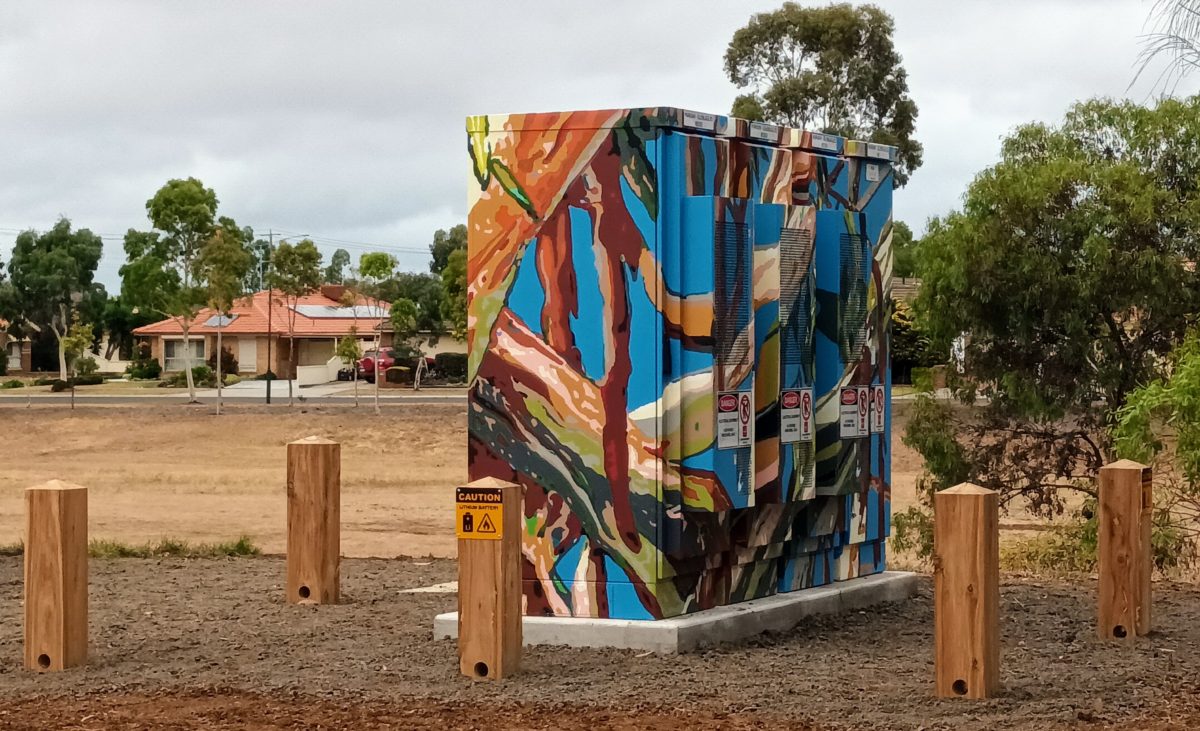The 120 kW/360 kWh energy storage system, the first neighbourhood battery on the Powercor network, is designed to “soak up” excess rooftop solar generation during peak generation times in and around the middle of the day, and then supply up to 170 nearby homes for up to three hours during peak electricity demand periods.
Powercor Chief Executive Officer Tim Rourke said the $1.3 million (USD 870,000) battery energy storage system, charged by both network electricity and local rooftop solar generation, will help alleviate solar power export constraints and share renewable energy across the entire sub network, not just homes with rooftop solar.
“As more Victorians choose to electrify their homes, we expect batteries will become important assets on our network to help meet the demands of our customers at peak times,” he said. “Batteries also play a role in supporting growing communities and their solar connections, while minimising the cost of network upgrades.”
Powercor said Tarneit, along with neighbouring suburbs Hoppers Crossing and Truganina, has the highest penetration of rooftop solar in Victoria, with almost 14,000 households, or about 42% of all customers, having already installed solar on their roofs.
“In Tarneit and the surrounding suburbs, almost one in two homes has rooftop solar, making this an ideal location for our first neighbourhood battery,” Rourke said.
It’s expected the new battery will enable an additional 129,600 kWh of solar exports per annum in the area – enough for an additional 30 solar customers to export their excess energy back into the network.
The Tarneit neighbourhood battery, developed under Powercor’s Electric Avenue project, was funded in part by the state government which provided $800,000 as part of its $10.9 million Neighbourhood Battery Initiative.
Victorian Energy Minister Lily D’Ambrosio said neighbourhood batteries are a vital step towards the state meeting its renewable energy storage targets of 2.6 GW by 2030 and 6.3 GW by 2035 – enough renewable energy to power about half of Victoria’s current homes at their peak energy use and reduce emissions by 75% to 80% by 2035.
“Neighbourhood batteries are helping Victorians be part of the renewable energy revolution by storing power from rooftop solar during the day and deploying in the evening,” she said.
The government launched the first inner-city neighbourhood battery in Australia in Fitzroy North in 2022, and D’Ambrosio said two more energy storage systems are on the way, including a 120 kW/390 kWh battery and off-street EV charge-point installed outside a community centre in Richmond, and a 150 kW/300 kWh system at Library at the Dock in the city centre.
The government is also investing a further $42 million to install 100 more neighbourhood batteries across Victoria, tripling the number of homes with access to renewable energy storage.
This content is protected by copyright and may not be reused. If you want to cooperate with us and would like to reuse some of our content, please contact: editors@pv-magazine.com.









1 comment
By submitting this form you agree to pv magazine using your data for the purposes of publishing your comment.
Your personal data will only be disclosed or otherwise transmitted to third parties for the purposes of spam filtering or if this is necessary for technical maintenance of the website. Any other transfer to third parties will not take place unless this is justified on the basis of applicable data protection regulations or if pv magazine is legally obliged to do so.
You may revoke this consent at any time with effect for the future, in which case your personal data will be deleted immediately. Otherwise, your data will be deleted if pv magazine has processed your request or the purpose of data storage is fulfilled.
Further information on data privacy can be found in our Data Protection Policy.